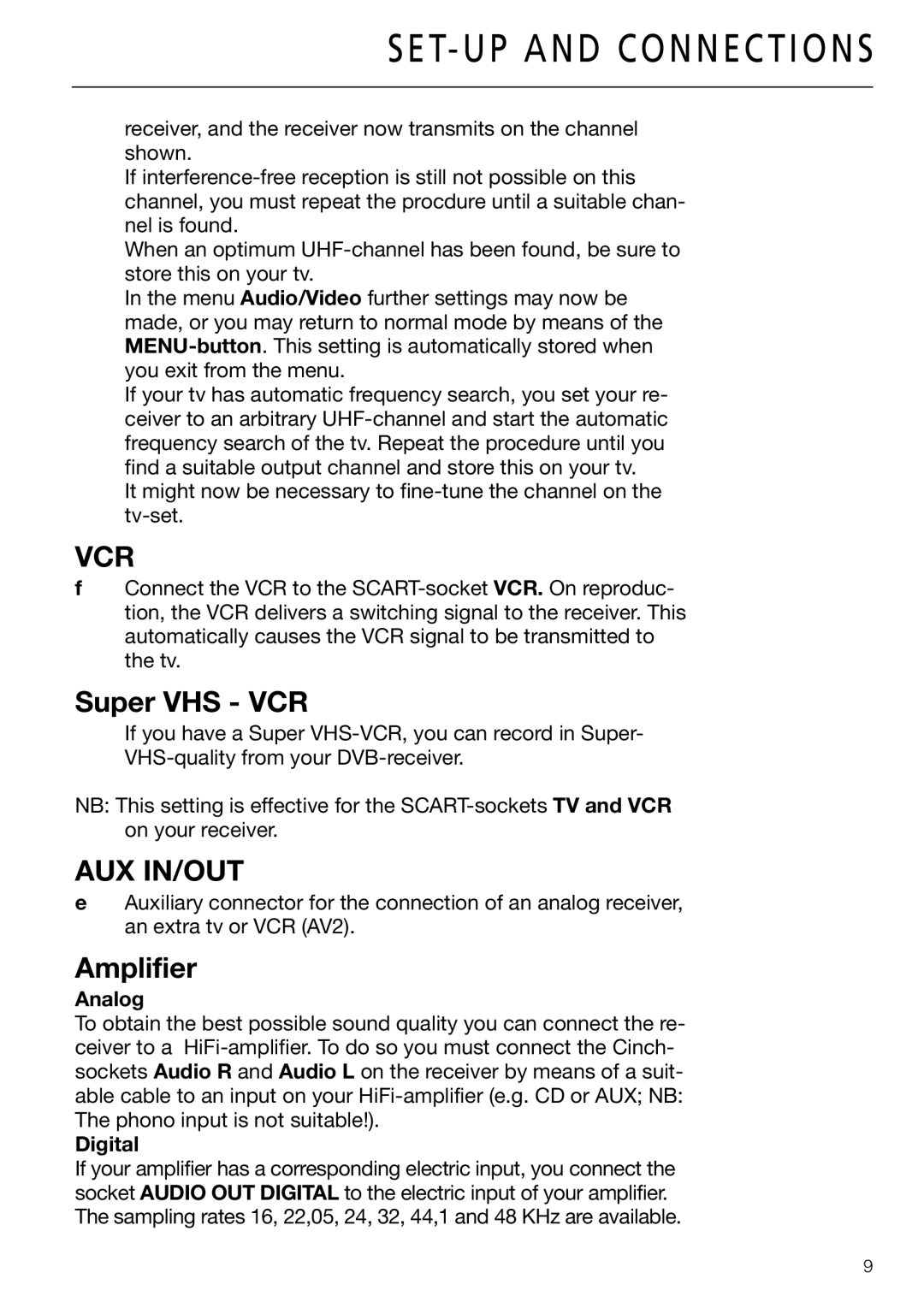SET- UP AND CONNECTIONS
receiver, and the receiver now transmits on the channel shown.
If interference-free reception is still not possible on this channel, you must repeat the procdure until a suitable chan- nel is found.
When an optimum UHF-channel has been found, be sure to store this on your tv.
In the menu Audio/Video further settings may now be made, or you may return to normal mode by means of the MENU-button. This setting is automatically stored when you exit from the menu.
If your tv has automatic frequency search, you set your re- ceiver to an arbitrary UHF-channel and start the automatic frequency search of the tv. Repeat the procedure until you find a suitable output channel and store this on your tv.
It might now be necessary to fine-tune the channel on the tv-set.
VCR
fConnect the VCR to the SCART-socket VCR. On reproduc- tion, the VCR delivers a switching signal to the receiver. This automatically causes the VCR signal to be transmitted to the tv.
Super VHS - VCR
If you have a Super VHS-VCR, you can record in Super-
VHS-quality from your DVB-receiver.
NB: This setting is effective for the SCART-sockets TV and VCR on your receiver.
AUX IN/OUT
eAuxiliary connector for the connection of an analog receiver, an extra tv or VCR (AV2).
Amplifier
Analog
To obtain the best possible sound quality you can connect the re- ceiver to a HiFi-amplifier. To do so you must connect the Cinch- sockets Audio R and Audio L on the receiver by means of a suit- able cable to an input on your HiFi-amplifier (e.g. CD or AUX; NB: The phono input is not suitable!).
Digital
If your amplifier has a corresponding electric input, you connect the socket AUDIO OUT DIGITAL to the electric input of your amplifier. The sampling rates 16, 22,05, 24, 32, 44,1 and 48 KHz are available.
